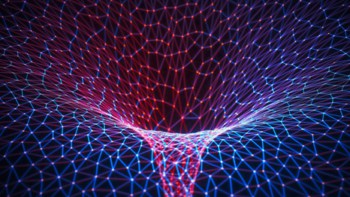
Researchers in Japan have developed a new mathematical technique to explore the characteristics of time crystals. The team, led by Kae Nemoto at the National Institute of Informatics in Tokyo, used a combination of graph theory and statistical mechanics to show how the exotic quantum materials evolve over time. Their work opens new routes to practical applications for time crystals, including simulations of complex quantum networks.
Time crystals are an exotic newcomer to physics, and researchers have much to learn about their unusual properties. First proposed in 2012, and finally observed experimentally in 2017, time crystals evolve continually as structures that repeat regularly in time. This is analogous to normal crystals, which have structures that repeat regularly in space. A normal crystal breaks translational symmetry in space because it is not the same everywhere in the crystal (some locations have atoms, while locations are empty space). Similarly, time crystals break translational symmetry in time, with the structure changing as a function of time.
When time crystals were first proposed there was a fair amount of debate about whether they could exist in nature. More recently, theory and experiment have shown that some non-equilibrium quantum systems driven by a periodic external force can become “discrete time crystals” (DTCs).
Interconnected groups of nodes
Nemoto’s team further explored DTCs using graph theory – which can model a wide variety of complex discrete systems as mathematical structures containing interconnected groups of nodes. In this case, the nodes represented the different states of a DTC. By mapping out asymmetrical links between states, the researchers could reliably predict how the system evolves over time in various situations.

In search of time crystals
When a DTC is driven too hard, the system can “melt” – causing it to stop oscillating and lose its time crystal order. To explore this process further, Nemoto and colleagues combined graph theory with statistical mechanics to model how a DTC’s graph structure evolved over time, until melting completely. This gave the team a far more complete insight into the nature of the crystals than ever achieved previously. Where useful applications of the materials have remained speculative until now, the results revealed how a DTC’s characteristics can be exploited to simulate intricately connected systems.
Using their newly developed toolset to translate DTCs into the language of graph theory, Nemoto’s team showed how the materials can be used to simulate networks the size of the global Internet, using just several quantum bits. They also showed that DTCs could be exploited to achieve quantum simulations of quantum many-body systems, whose dynamics are notoriously difficult to model. Through further improvements, the researchers’ techniques could become suitable for applications including advanced machine learning algorithms, the analysis of natural ecosystems and simulations of neural structures in the brain.
The study is described in Science Advances.



